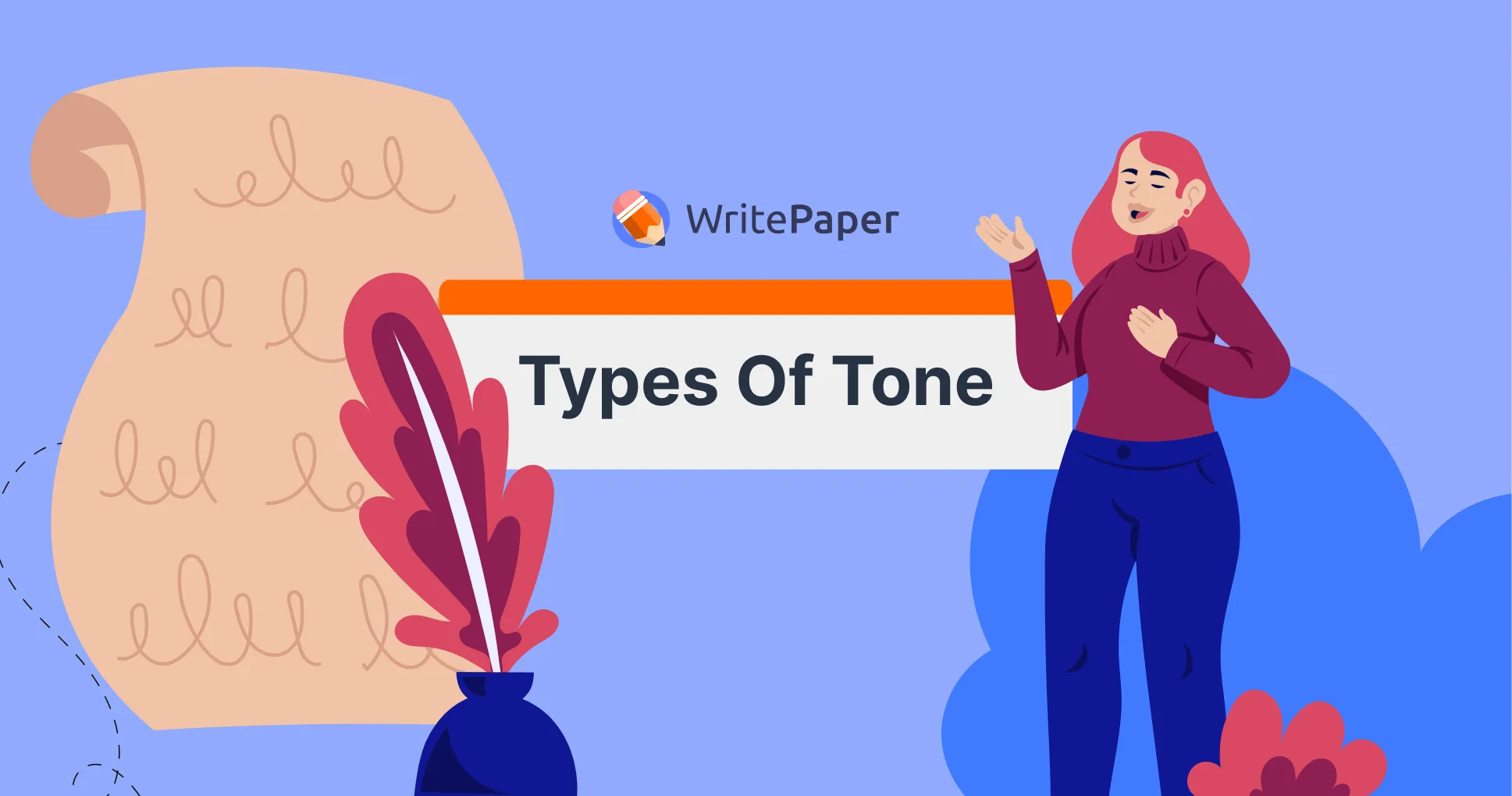Photo essays leverage our brain's ability to process images swiftly, allowing us to craft powerful narratives that resonate deeply. Here are the steps to create one:
- Choose a Theme: Select a central topic or idea for your essay.
- Plan and Research: Study the topic deeply, focusing on its impact.
- Storyboard Your Shots: Outline the photos you need to tell your story effectively.
- Start Shooting: Capture images that illustrate your story.
- Capture Emotion: Aim for photos that evoke strong feelings.
- Edit and Curate: Select your best images to create a cohesive narrative.
- Write Captions: Write captions that complement your photos and provide context.
In this article, we'll explain each step clearly and provide examples of this type of writing. If creating a photo essay still feels difficult after reading this guide, our experts at WritePaper are here to help with expert assistance.
What is a Photo Essay?
A photo essay is a collection of images arranged to tell a specific story or convey a particular message. When considering a photo essay definition, each photo contributes to the overall narrative by capturing emotions, events, or concepts that words alone cannot fully express. By combining visual storytelling with minimal text, photo essays provide a powerful way to communicate ideas and evoke responses from viewers.
Photo Essay Examples
The best way to grasp the essence of visual storytelling is to explore exemplars that have made a lasting impact. These examples serve as beacons of inspiration, shedding light on the myriad possibilities and the profound reach of this medium. Let's delve into a few notable photo essay examples:
1. 'Migrant Mother' by Dorothea Lange: This iconic photograph from the Great Depression era is a prime example of the emotional power of a single image. It's not just a portrait of a woman; it's a glimpse into the hardships faced during one of the most challenging times in American history.
2. 'The Americans' by Robert Frank: Robert Frank's groundbreaking narrative photo essay reshaped the landscape of documentary photography. His cross-country journey resulted in a collection of images that painted a complex and unfiltered portrait of American life in the mid-20th century.
3. 'The Family of Man' Exhibition: Curated by Edward Steichen, this exhibition featured a diverse array of photographs from around the world. It aimed to demonstrate the universality of human experiences, showcasing themes like love, work, and play.
4. 'The Whale's Way' by Paul Nicklen: This modern example of a photo essay captures the breathtaking beauty of the Arctic and the fragile ecosystems endangered by climate change. It's a powerful call to action, employing awe-inspiring images to raise environmental awareness.
5. 'Country Doctor' by W. Eugene Smith: This classic photo essay example documented the life of a dedicated general practitioner, Dr. Ernest Ceriani, in a small Colorado town. It provides a window into the challenges, joys, and sacrifices of a rural medical practitioner.
How to Make a Photo Essay?
Learning how to make a photo essay effectively is a dynamic process that combines photography and storytelling. Here are seven major steps form our writers for you to guide you along the way, along with examples for each step:

1. Choose Your Theme: Start by selecting photo essay topics that resonate with you. For instance, if you're passionate about environmental conservation, your theme could be 'Plastic Pollution in Our Oceans.'
2. Plan and Research: Research your chosen theme thoroughly to gain a deep understanding. In the case of the plastic pollution theme, learn about its impact on marine life, ecosystems, and the broader environmental context.
3. Storyboard Your Shots: Outline the narrative you want to convey in your photo essay format. Consider the story's structure, such as introducing the issue, showing its consequences, and highlighting solutions. For your plastic pollution essay, you might start with images of pristine beaches and progress to photos of plastic waste, culminating in images of clean-up efforts.
4. Start Shooting: Begin capturing images that align with your narrative. For your plastic pollution visual narrative, this could include shots of polluted beaches, marine animals entangled in plastic, and activists working to combat the issue.
5. Capture Emotion: Seek moments that evoke emotions. In your plastic pollution essay, capture the anguish of a sea turtle tangled in plastic or the determination of volunteers cleaning up a beach.
6. Edit and Curate: Review your images and select the most compelling ones that fit your narrative. Ensure they flow naturally from one to the next, guiding the viewer through the story.
7. Add Captions and Text: Complement your images with informative captions and text that provide context, facts, and your personal perspective on the issue. Explain the importance of addressing plastic pollution and suggest ways to make a positive impact.
Willing to Weave Your Story Through the Lens?
It's your life, your story, and we'll make it an artful masterpiece!

Tips for Storytelling Through Images
Mastering how to do a photo essay involves more than just taking pictures; it requires the art of storytelling through visuals. Here are some key tips (from experts who can also assist you with write my term paper for me request) to enhance your storytelling ability:

1. Embrace Variety: Include a diverse range of shots, such as wide-angle, close-up, and detail shots. This variety adds depth and keeps your audience engaged. For instance, if your essay is about a bustling city, capture wide cityscapes, close-ups of street vendors, and the small details that define urban life.
2. Use the Rule of Thirds: The rule of thirds is a classic photography technique. Divide your frame into thirds, both horizontally and vertically, and place key elements along these lines or their intersections. This creates a visually pleasing composition and draws the viewer's eye to important subjects.
3. Focus on Composition: Composition is essential. Pay attention to lines, shapes, and patterns within your frame. Leading lines, like a winding road or a river, can guide the viewer's gaze. Symmetry, asymmetry, and framing can all be used to create visually appealing compositions.
4. Capture Emotion: The most impactful photos convey emotion. Seek out moments that express feelings such as joy, sorrow, surprise, or determination. For example, if your photo essay is about a community project, photograph the excitement of participants or the sense of accomplishment on their faces.
5. Storytelling Details: Don't overlook small but significant elements in your photos. Sometimes, it's the subtle details that carry immense narrative weight. In a visual narrative about a family, focus on personal belongings, heirlooms, or the wear and tear of a cherished family photograph.
6. Experiment with Perspective: Explore different angles and perspectives to add depth and interest to your images. Try shooting from high above or at ground level to change the viewer's point of view. For example, if you're creating a photo essay about a skyscraper's construction, take shots from both the top floor and the ground to illustrate the entire process.
7. Think About Lighting: Lighting plays a pivotal role in photography. Pay attention to the quality of light – whether it's natural or artificial – and how it interacts with your subjects. For a visual narrative of a musician's performance, capturing the play of stage lights and shadows can add drama and atmosphere to your shots.
If you also find how to write a literary analysis essay, read our article.
Photo Essay Ideas
The world is full of compelling stories waiting to be captured through your camera. Here are some topics for photo essays to inspire your visual storytelling:
- Faces of a City: Document the diverse individuals that bring a city to life.
- Cultural Celebrations: Capture the vibrant colors and traditions of festivals.
- Endangered Species: Raise awareness about animals struggling for survival.
- The Art of Craftsmanship: Showcase artisans keeping traditional trades alive.
- Community Gardens: Highlight the growth and unity in community gardens.
- Climate Change Impact: Document the effects of climate change, from melting glaciers to extreme weather.
- Generational Differences: Contrast the lives of different generations within a family.
- Portraits of Resilience: Tell stories of people overcoming adversity.
- A Journey Along a River: Follow a river from its source to the sea, capturing its impact.
- The Beauty of Decay: Find art in abandoned places and crumbling structures.
- Hidden Worlds: Explore subcultures and professions outside the mainstream.
- Healthcare Heroes: Spotlight the dedication of healthcare workers, especially in crises.
- Street Art and Graffiti: Showcase urban art and the stories behind it.
- A Year in Seasons: Capture the changing seasons in one location.
- Environmental Activism: Join efforts to protect our planet and its ecosystems.
Ready to Turn Your Unique Story into a Captivating Visual Narrative?
Let our experts craft your personalized photo essay and let your moments come alive through the power of images and words.

Wrapping Up
When it comes to visual storytelling, both drawings and photos are powerful tools. They can convey emotions, messages, and stories that transcend language, connecting people from different backgrounds. You're ready to dive into your own visual storytelling with the steps we've covered like:
- choosing a theme
- researching
- planning your shots
- starting documenting
- capturing emotion
- editing
- adding caption
Your camera becomes your voice, capturing unique stories with every click. Whether you want to inform, engage, or inspire, blending images with words can create a profound impact.
And remember, if creating a photo essay feels challenging, WritePaper offers expert assistance tailored for this type of assignment. We also provide a sociology essay writing service and more to support you with any subject you need help with!
FAQs
How Do You Start a Photo Essay?
Start photo essay by selecting a compelling theme or story you want to tell. Plan your shots by outlining the key images you need. Capture high-quality, emotion-filled photos that convey your narrative. Arrange your photos in a logical sequence and edit them for clarity and impact. Finally, write captions that provide context and enhance the story.
What are Examples of Photo Essays?
Examples of photo essays include:
- Faces of a City: Documenting the diverse people in an urban environment.
- Endangered Species: Raising awareness about at-risk animals.
- Cultural Celebrations: Capturing the vibrancy of festivals and traditions.
- Portraits of Resilience: Showcasing individuals who have overcome significant challenges.
What Makes a Great Photo Essay?
A great photo essay combines powerful, high-quality images with a cohesive narrative. Each photo should contribute to the story, evoking emotions and providing insight. Effective editing and thoughtful sequencing enhance the visual flow, while concise captions offer necessary context without overshadowing the images.
- rewrote and updated definition and photo ideas;
- added FAQs.
- Heimbuch, J. (2024, January 29). How to Create a Photo Essay in 9 Steps (with Examples). Conservation Visual Storytellers Academy ®. https://conservationvisuals.com/tutorials/editing/create-photo-essay/
- Schulten, K. (2024, February 14). Creating Photo Essays About Community: A Guide to Our Where We Are Contest. The New York Times. https://www.nytimes.com/2024/02/14/learning/creating-photo-essays-about-community-a-guide-to-our-where-we-are-contest.html





.webp)